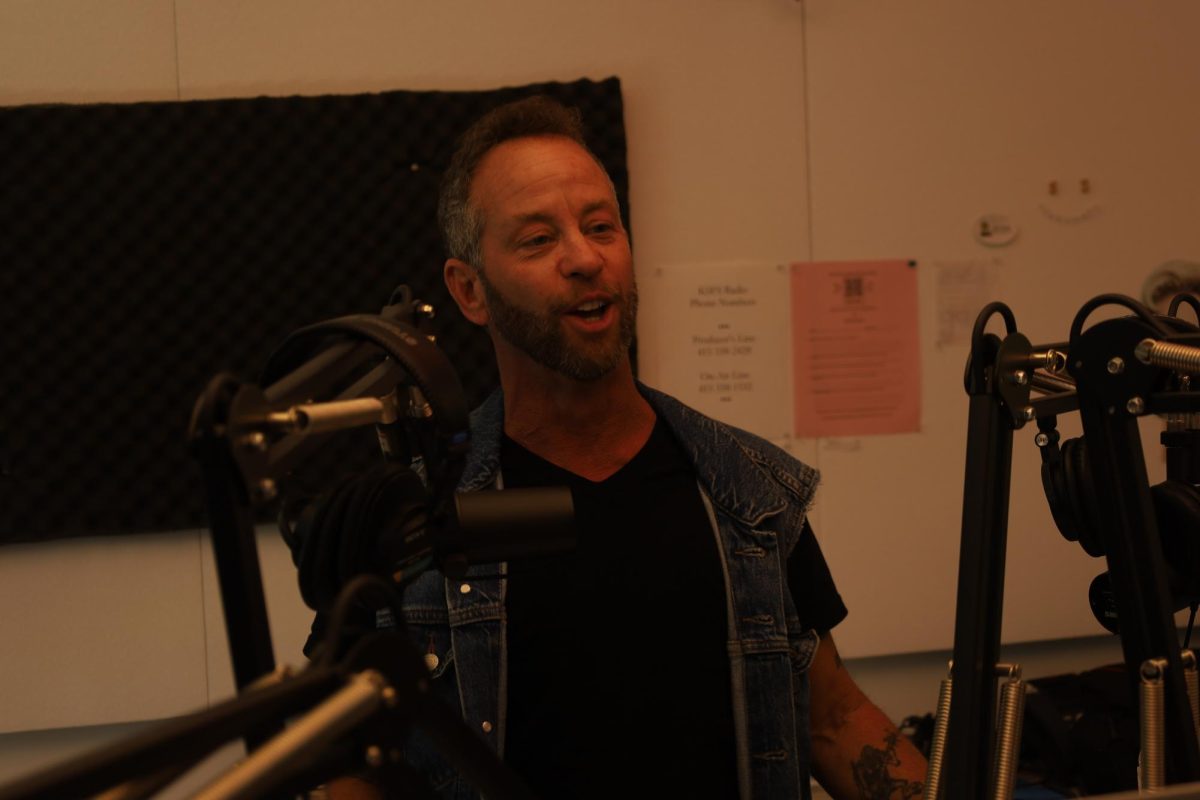As the sun rose above the horizon one November morning, years of what one Native American SF State student described as anger began to wane, transforming his perspective on Thanksgiving Day.
Nicholas Gomez, a descendant of the Ohlone-Costanoan Esselen Nation, a tribe that has resided in the Monterey Bay area for thousands of years, was 25 years old when he took the first ferry to Alcatraz Island and joined thousands of people in the Indigenous People’s Sunrise Gathering. Amidst the immense multitude, he could only stand and listen. As he took everything in, he was struck when he heard his elders encourage an early gathering to spend time with family afterwards.
Gomez will be one of thousands of participants who join together with members of some of the 566 federally-recognized tribes every Thanksgiving Day at sunrise on Alcatraz Island to honor indigenous culture and survival. The gathering, which began with the 1969 Occupation of Alcatraz by Native American activists, including former SF State student Richard Oakes, gave Gomez an opportunity to reflect on his feelings toward the holiday.
“If we are like ‘Man, eff Thanksgiving’, we’re actually letting the colonizers win by saying we don’t want to participate in something that really Native Americans do all the time. We do gather. We do eat with our family. We do share our stories,” Gomez said.
This year the ceremony could bring as many as 5,000 people together for the 45th anniversary of the 1969 occupation, according to Rochelle Diver of the International Indian Treaty Council, which organizes the event. The purpose of the Indigenous People’s Sunrise Gathering coincides with a non-traditional Thanksgiving Day narrative, one that celebrates indigenous history.
The traditional Thanksgiving story is historically inaccurate in its depiction of peaceful interactions between indigenous people and European settlers, according to Katherine Wallace, a lecturer in the American Indian Studies department at SF State. Wallace is a descendant of the Karuk, Yurok and Hoopa Valley tribes of Northern California.
“They make it sound like the pilgrims came and they shared everything with the Indians and that’s not true,” she said. “They make it sound like everything was just lovely and everyone got along, but that’s not true either.”
One major point of contention was each group’s perspective on land ownership. Indigenous peoples cared for the land, while European settlers sought ownership of the land, Wallace said.
The tale also generalizes one native and settler interaction to all different indigenous groups, Wallace said.
“That story is connecting us to those people that we had nothing to do with and knew nothing about,” she said. “It’s ignoring the fact that we’re a different people with our tribal traditions and history. That is sometimes the only time Indians are mentioned all year long. I don’t want to be part of that stereotype.”
Gomez said this story is told from the point of view of European settlers, obscuring indigenous people’s history, which is today translated in the misrepresentation of Native people. The frustration he felt about Thanksgiving growing up particularly festered from his schooling experiences which illustrated his culture as nonexistent, Gomez said.
“I took a college course at a different school and the teacher said, ‘All California Natives are extinct,’” Gomez said, responding,“That’s not true. I’m right here! How am I extinct?”
Not only do people believe indigenous people are all dead, but they aren’t aware varied Native groups exist, Gomez added.
While taking a American Indian Studies course about native people in the mass media, Gomez remembers students in his class being unable to name any of the hundreds of indigenous nation.
“All of the history that we know about Native Americans, because we learn so little in school, we learn from movies,” Gomez said. He pointed to the generalized image of Native people as living in teepees, wearing headdresses and riding horses. “My people wore Tule, we wore grass, we wore abalone shells.”
Carlos Peterson-Gomez, a member of the Student Kouncil of Intertribal Nations said the emergence of native people in the public media is one form of progress and resistance because many people still tend to believe that indigenous people are a thing of the past.
“Thanksgiving to me is that kind of day, a day to remember the resistance that we still carry on as indigenous people, and to remember we’re still living another chapter in the struggle for self-determination,” Peterson-Gomez said.
He connected the sunrise gathering to the recent push by Native American activists to transform Columbus Day to Indigenous People’s Day as instances of indigenous people flipping dominant narratives to empower each other. Peterson-Gomez said he did not celebrate Thanksgiving because he did not believe in celebrating false narratives.
Thanksgiving for Gomez has nothing to do with “pilgrims or the American way” but rather invokes gratitude for the continuous survival of his tribe and all native people.
“In a year from now, two years from now, 20 years, the same people that you sit with aren’t going to be there,” Gomez said, pointing out life’s unpredictability. When his father passed, Gomez cut his long black ponytail as tradition dictates, though it’s grown back now. He said Thanksgiving is about joining with loved ones, and unplugging from the material world.
“Disconnect with all that is un-sacred and connect with all that is sacred, that is how you celebrate Un-Thanksgiving,” Gomez said.





